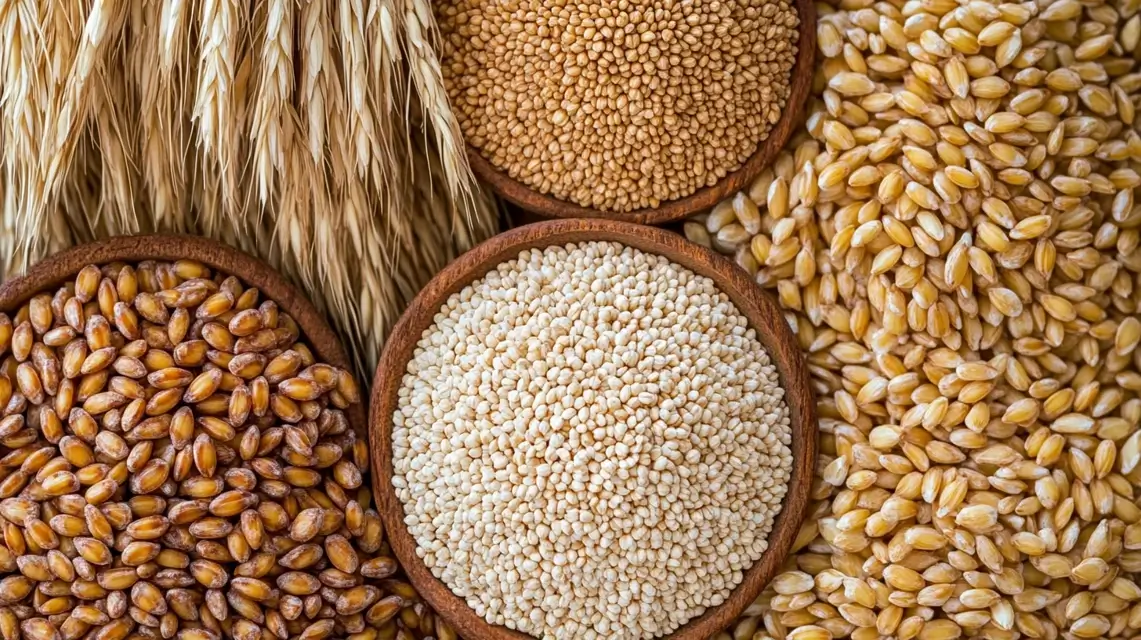Rediscovering Ancient Grains for a Healthier You
Imagine starting your day with a bowl of cereal that’s not just delicious but also packed with nutrients your body craves. In a world dominated by processed foods, ancient grains are making a powerful comeback, offering a healthier and more wholesome alternative. These grains have been around for thousands of years, untouched by modern genetic modification, making them a pure and natural choice for your breakfast routine.
Health-conscious consumers and nutrition experts, including those featured in the New York Times, emphasize the importance of incorporating ancient grains into daily meals. If you’re looking for a way to boost your energy, improve digestion, and maintain overall well-being, switching to ancient grain-based cereals might be the best decision you make today.
Table of Contents
What Are Ancient Grains and Why Are They Making a Comeback?
Understanding Ancient Grains
Ancient grains refer to a group of grains and pseudocereals that have remained largely unchanged for thousands of years. Unlike modern grains, which are often heavily processed, ancient grains retain their original nutritional properties, making them a superior dietary choice.
Some of the most popular ancient grains include:
- Quinoa – A high-protein, gluten-free grain rich in essential amino acids.
- Amaranth – Packed with fiber and calcium, perfect for heart health.
- Farro – An excellent source of iron and B vitamins.
- Barley – Great for digestion and lowering cholesterol.
- Spelt – A fiber-rich option that supports gut health.
Why Ancient Grains Are Gaining Popularity
In recent years, there has been a significant shift towards healthier eating habits. More people are looking for nutrient-dense, whole-food options, and ancient grains fit the bill perfectly.
Key reasons why ancient grains are trending:
- Less processing – Unlike refined grains, they retain their bran, germ, and endosperm, which contain essential nutrients.
- High fiber content – Helps with digestion and keeps you feeling full longer.
- Rich in vitamins and minerals – Essential for maintaining a healthy body and mind.
- Naturally gluten-free options – Ideal for those with gluten sensitivities.
The Best Ancient Grains for a Nutritious Breakfast Cereal
Whole Grains vs. Refined Grains – Which Is Better?
The answer is simple: whole grains are always the better choice. Unlike refined grains, which lose most of their nutrients during processing, whole grains keep their natural fiber, antioxidants, and vitamins intact. This means that they provide better digestion, sustained energy, and improved overall health.
Popular Ancient Grains in Healthy Cereals
| Grain | Nutritional Benefits | Best Used In |
|---|---|---|
| Quinoa | High in protein, gluten-free | Cereal, granola, porridge |
| Amaranth | Rich in calcium & fiber | Hot cereals, smoothie bowls |
| Farro | Packed with iron & B vitamins | Muesli, overnight oats |
| Barley | Supports heart health & digestion | Breakfast bowls, porridge |
| Spelt | High in protein & fiber | Cereal flakes, granola |
Ways to Add Ancient Grains to Your Breakfast Routine
Homemade Ancient Grain Cereal Recipe
One of the easiest ways to include ancient grains in your diet is by making your own breakfast cereal at home. Here’s a simple and nutritious recipe to get you started:
Ingredients:
| Ingredient | Quantity |
| Rolled oats | 1 cup |
| Quinoa flakes | ½ cup |
| Chia seeds | 2 tbsp |
| Almond milk | 1 cup |
| Honey | 1 tbsp |
Instructions:
- Combine oats, quinoa flakes, and chia seeds in a bowl.
- Add almond milk and mix well.
- Sweeten with honey and let it soak overnight.
- Top with fresh fruit and nuts in the morning and enjoy!
Store-Bought Options
If making your own cereal isn’t an option, there are plenty of store-bought ancient grain cereals available. Look for brands that use minimal processing and natural ingredients.
The Future of Ancient Grains in Healthy Cereal Trends
How Brands Are Adapting to Consumer Demand
Leading cereal brands are incorporating ancient grains into their products to meet the growing demand for healthier options. Major food publications, including the New York Times, have highlighted how consumers are becoming more mindful of their food choices, pushing companies to rethink their ingredients.
Sustainability and Ethical Sourcing
Ancient grains are not only good for your health but also for the planet. They require fewer resources to grow and are often cultivated using traditional farming methods that support biodiversity. Choosing ancient grain cereals means you’re making a conscious effort toward sustainability.
FAQ – Everything You Need to Know About Ancient Grains in Cereal
Q1: What are the best ancient grains for breakfast cereals?
Some of the best include quinoa, amaranth, farro, and barley due to their high fiber and nutrient content.
Q2: Are ancient grains better than modern grains?
Yes! Ancient grains are less processed and retain more of their original nutrients compared to modern grains.
Q3: Are ancient grains gluten-free?
Some are! Quinoa, amaranth, and millet are naturally gluten-free, making them ideal for those with gluten sensitivities.
Q4: Where can I buy ancient grain cereals?
You can find them in health food stores, online retailers, and supermarkets.
Conclusion: Make the Switch to Ancient Grains for a Healthier Morning
Ancient grains offer a powerful way to enhance your breakfast routine, providing essential nutrients, sustained energy, and digestive support. Whether you choose to make your own cereal at home or opt for a store-bought option, incorporating these grains into your diet can have a profound impact on your health.
Start your day the right way—embrace ancient grains and give your body the nourishment it truly deserves!
Leave a Comment
Your email address will not be published. Required fields are marked (required)
Tried this recipe? Share your rating!
There are no reviews yet. Be the first one to write one.

